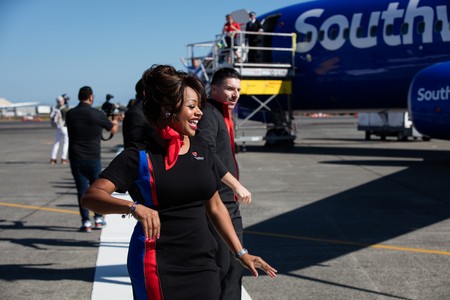Statistics released by a low-profile European online travel site show that countries failing to foster budget airlines and the development of so-called ultra-low-cost carriers (ULCCs) miss out on the air travel affordability revolution.
Berlin-based Kiwi.com says it has analysed data on more than one million air journeys to come up with its annual review of air fares, which ranks the world's top 75 countries for air travel affordability.
The top of the affordability list is dominated by countries that have encouraged the proliferation of low-cost carriers, such as India, Malaysia, Indonesia and the Philippines in Asia, and the EU, which has fierce competition between low-cost carriers (LCCs) and full-service airlines as well as between low-cost carriers such as Ryanair and easyJet.
The US, which invented the LCC — the first of which, Texas-based Southwest Airlines, has grown to become the nation's biggest domestic airline — has also now spawned ULCCs, such as Spirit Airlines, Allegiant and Frontier, which are among the country's fastest growing and most profitable.
But that has served only to highlight the glaring disparity between the US and its northern neighbor, Canada, which has a terrible record of discouraging competition and hiking the cost of air travel.
According to Kiwi.com, the US is No.17 in the global air fare affordability ranking, whereas Canada is No.70, with only Japan, Netherlands, Qatar, Finland and United Arab Emirates bigger basket cases in that category. The Kiwi.com data shows fares in the US cost just $US9.81 per 100 kilometres compared with a whopping $US38.71 in Canada.
That's because Canada has high airport costs and security charges that can be as much as $US25 per passenger compared with as little as $US2 in other countries.
It's also pointed out that Canada's insistence on 75 per cent Canadian ownership of airlines has stifled foreign investment, when jurisdictions like the US and EU allow 50 per cent foreign ownership.
Some countries, such as Australia and New Zealand, even allow 100 per cent foreign investment. Without that, Australia would not now have two LCCs, as Virgin Australia subsidiary Tigerair started life as part of Singapore's Tigerair and took advantage of the lack of ownership restrictions to set up a domestic service Downunder.
Even so, according to Kiwi.com's data, Australia, which has a reputation for high business costs, is barely better than Canada, coming in at No.66 on the list at $US35.69 per 100 kilometres — partly explained by the fact that Australia's two LCCs are now part of the Qantas-Virgin duopoly.
Compare that to Malaysia — No.2 on the list with average air fares retailing for just $US3.78 per 100 kilometres.
Canada's high-cost regime for airlines means that, until recently, the country has had only one LCC, WestJet.
That has changed with the arrival of three fledgling ULCCs, Jetlines, NewLeaf and Enerjet, which are using or planning to use secondary airports, where costs are lower. Part of their strategy is to target the five million Canadians who cross the border into the US each year to access cheap fares unavailable at home.
It's not before time. "Griping about the cost of air travel in this country is as endemic as bitching about the weather," business columnist John Ivison wrote recently in Canada's National Post newspaper.
























